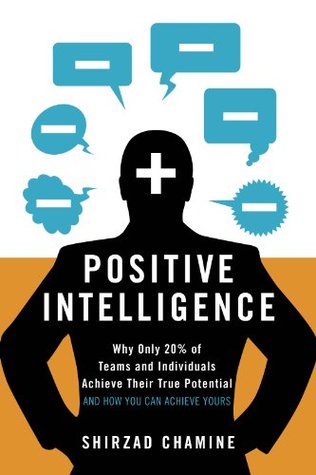More on this book
Community
Kindle Notes & Highlights
Read between
April 1 - April 1, 2020
Positive Intelligence measures the relative strength of these two modes of your mind.
High Positive Intelligence means your mind acts as your friend far more than as your enemy. Low Positive Intelligence is the reverse.
PQ stands for Positive Intelligence Quotient.
PQ is the percentage of time your mind is acting as your friend rather than as your enemy; or, in other words, it is the percentage of time your mind is serving you versus sabotaging you.
If you could significantly improve one important thing, personally or professionally, as a result of reading this book, what would it be? Keep that goal in mind as you read this book.
People prove resistant to change, even when they seem to think they want it.
MEETING THE SABOTEURS
This Saboteur-Sage brain link results in three separate but related strategies to increase your PQ: (1) weaken your Saboteurs; (2) strengthen your Sage; and (3) strengthen your PQ Brain muscles.
What do you find energizing, hopeful, or exciting about Positive Intelligence? What are you skeptical about? How would you know if your skepticism were generated by a Saboteur trying to stay in power?
The bulk of the work in weakening your Saboteurs involves exposing them to the hot light of awareness by simply observing and labeling them when they show up.
Given that the Judge’s damage is done on three entirely different fronts—judging yourself, the people around you, and your external circumstances—you might want to remind yourself of its typical patterns in each of these areas.
come up with at least three scenarios where their supposedly bad situation could turn into a gift and opportunity. The time frame doesn’t matter.
The PQ Brain equivalent of lifting a dumbbell is very simple: shift as much of your attention as you can to your body and any of your five senses for at least ten seconds.
Regardless of how busy you are, promise yourself that you will give your busy mind a rest for one minute every time you go to the bathroom.
The 80-20 Rule of Conflict: It is a rare conflict in which anyone is 100 percent at fault. As a rule of thumb, I tell people in a conflict to remember that they are at least 20 percent at fault. Encourage people to shift from trying to prove the other person’s 80 percent fault to discovering the 20 percent they are contributing. This shifts the focus of the conversation from the Judge’s blame to the Sage’s exploration and curiosity.


